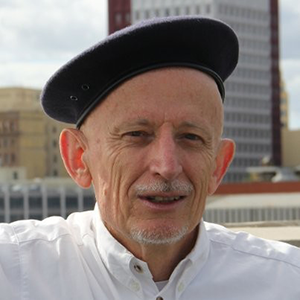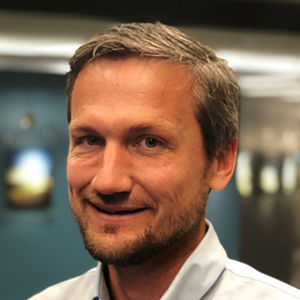What are you and your company doing to help reduce embodied carbon emissions?
Cecilia Freeman
Interior Designer & Resource Coordinator, EwingCole, Philadelphia
As a part of our firm-wide sustainability efforts, we have launched a focus group dedicated to learning about embodied carbon, sharing that information with the firm, and implementing strategies for decarbonizing our projects. To jump start our efforts, we started a book club, the first subject of which has been “A New Carbon Architecture.” For me personally, this part of the process has been extremely helpful in broadening my understanding of carbon in the built environment and has helped me identify what questions need to be asked during the material selection process.
Other focus groups in our sustainability steering committee and some project teams are using tools like EC3 and Tally to scrutinize materials through a carbon lens. I am specifically focusing on avenues of decarbonization through interior architecture/design, including not only mindful designs and specifications but also mindful sampling.
While attending one of Interface’s Carbon Love & Learns earlier this year, I had the good fortune of meeting Lisa Conway and Esther Obonyo, two other Philadelphia-based AEC professionals hoping to bring more attention to the challenges we face regarding embodied carbon. We saw a great opportunity to educate ourselves while supporting regional decarbonization efforts, so we launched the CLF Philly hub! I am so looking to exchanging ideas and know-how with other industry professionals and allies, be they near or far.
I am hopeful that finding solutions to the challenge of embodied carbon will help address not only the climate crisis, but will also simultaneously support healthy forests and resilient communities.

Cecilia Freeman
David Ness
Adjunct Professor, Scarce Resources and Circular Economy (ScaRCE), University of South Australia
Most discussion of embodied carbon reduction seems concentrated at the materials level. But ‘building clever’ may only achieve up to 50% reduction in building related carbon, well short of the dramatic 60-70% cut required by 2030 to reach net zero in 2050. Arguably, we must aim higher and find ways for clients to meet their needs by ‘building less’ (80% reduction), or even ‘not building’ (100%), via better use of existing assets and digitised services — as COVID has shown is possible.
This challenge drives my research on zero carbon, circular and sufficient solutions with university colleagues. Having devised a ‘cloud platform for reuse of building components as a service’, supported by an ARUP Global Research Grant, we are now rethinking rating tools to better account for embodied carbon and constrain excessive size. New commercial projects of over 3 million square feet currently receive the highest ‘green’ certification, despite high vacancies.
The need to curtail expansion of building stock in well-endowed societies is not only driven by carbon imperatives. To conform with the SDGs, the rich are obliged to shrink their consumption and share resources with the poor, supporting them to acquire desperately needed services, shelter, and infrastructure. An Olympian challenge involving global equity, ethics, and social change!
I am totally committed to advocating the required massive transformation in the building sector, engaging with like minds to achieve collective impact.

David Ness
Julie Janiski
Integrated Design Principal, Sustainability Leader, Buro Happold, Boston, MA
Buro Happold is thrilled with the amount of enthusiasm and expertise emerging in the design community on this topic. We are now engaged with or co-leading CLF Hubs across the nation, from LA to Pittsburgh, New York and Boston, and are tracking our annual progress against our practice’s embodied carbon targets as part of our global carbon commitments.
Our computational collective team has developed an open-source LCA Toolkit (bhom.xyz) which received an AIA Innovation Award and approved as a tool for the ILFI Zero Carbon standard, and our global practice has published embodied carbon studies to support the growth of best practices in the industry (e.g. heavy timber in the Northeastern US, and structural comparisons in the UK). We are also part of the steering committee developing the MEP2040 Challenge to support carbon neutrality for both operational and embodied carbon.
My first significant project in this space was an LCA for the Mercedes Benz Stadium in Atlanta in 2014. We’re now including this work on many of our projects for a more holistic approach to carbon reductions that incorporates operational and embodied carbon related to all our disciplines – from corporate carbon accounting and campus carbon planning, to structures, facades, lighting, and MEP design.
In the Boston community, I’ve been so grateful to work with the CLF Boston Hub and its programs as well as with the City of Boston as part of a Zero Net Carbon technical advisory group. What an exciting moment to take ownership of our role in the carbon and health impacts of materials selection!

Julie Janiski
Adam McMillen
Director of Sustainability, IMEG Corp
Growing up on a farm in central Illinois, I planted my roots in sustainability at a very early age. Working on the farm and in small businesses taught me the value of resource conservation and that wasting precious fuel and materials quickly eats at your bottom line and eventually your livelihood. My interest in sustainable design began when my dad, mom, and grandfathers built a passive solar home for our family of 13. This home worked with the sun and nature and had a profound impact on my love for buildings. Fast-forward 20+ years — past graduate school and the early years of my career — to today, where I now lead the sustainability design practice for IMEG Corp., a 1,500-person engineering firm. But I always remember my dad’s favorite saying, “Never forget where you came from.”
At IMEG, our focus on fuel and resource conservation quickly scales to a national level, impacting millions of square feet. We’re able to make small changes to simple design practices that literally can have a tangible impact on the national carbon footprint. As the Director of Sustainability at IMEG, I’m responsible for integrating sustainable design and analysis practices into each office and across every team. We’ve been tackling operational carbon emissions for decades with numerous net zero projects on our resume, including the Denver Water Operations Complex Redevelopment – recipient of the 2021 ACEC Excellence in Engineering Grand Conceptor Award – a true model for sustainable design with its energy and water efficiency, water reuse and reclamation, and zero on-site carbon emissions.
Recently, IMEG joined the Structural Engineers 2050 Commitment Program, a first step in being more mindful and understanding of embodied carbon and its impact on the environment. Through this program, our structural engineers prioritize sustainable design and construction best practices, tracking and reporting embodied carbon data, and develop reduction targets for reducing and eliminating embodied carbon. In the last few years, I’ve worked with other MEP firm leaders to build industry momentum around reducing the embodied carbon of MEP equipment, working with Building Green and CLF to motivate manufacturers to obtain EPDs for their equipment. Without the data, it will be hard to capture and reduce this critical piece of global carbon emissions.

Adam McMillen







